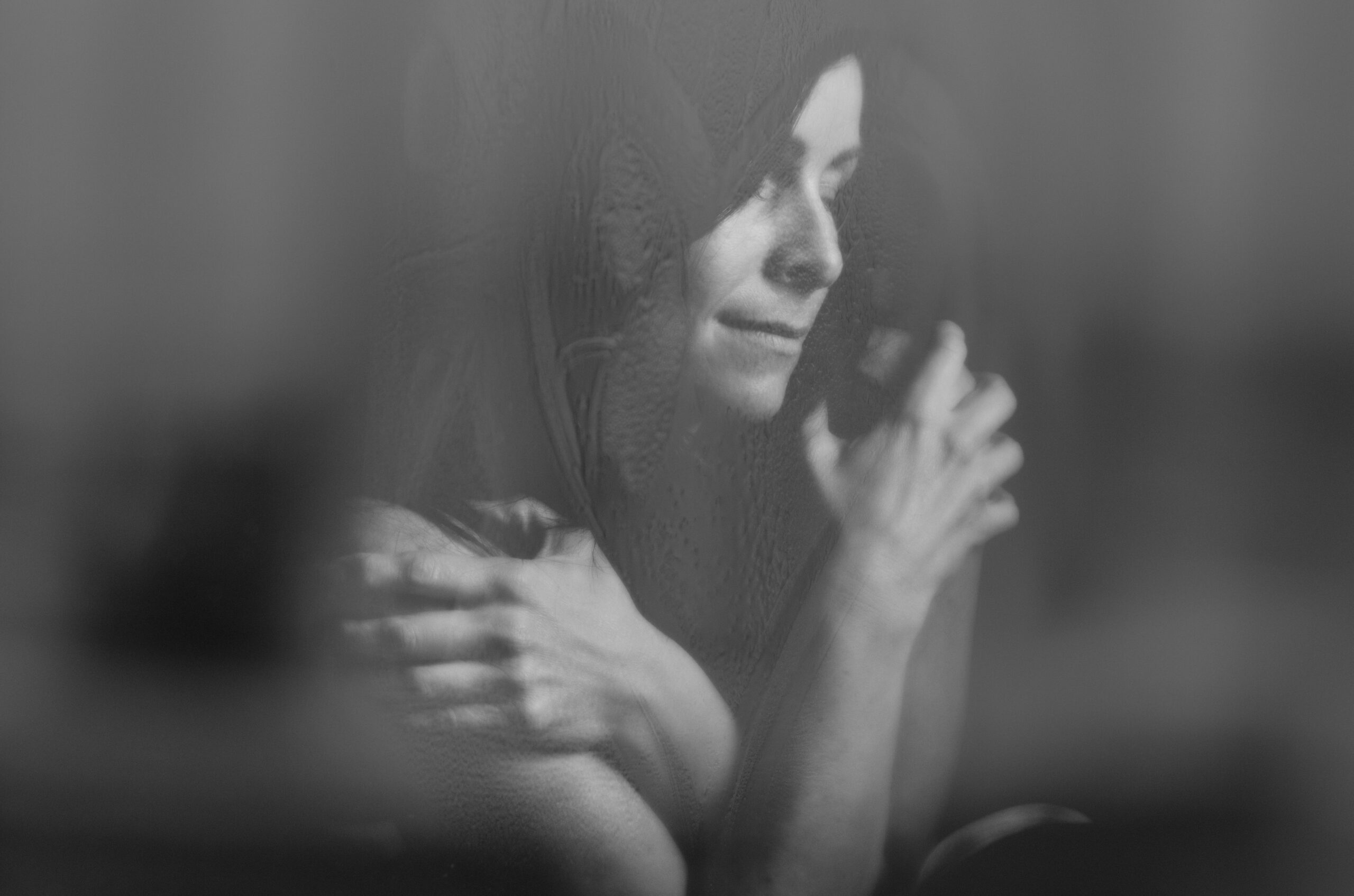Self-Portrait Therapy: Finding Healing and Growth Through Photography
In the quiet moments behind the lens, self-portrait photography becomes a mirror—not just to our image, but to our healing. Self-portrait therapy is more than snapping photos; it’s a transformative way of processing emotions, reconnecting with your body, and uncovering your inner story.
When words feel heavy or hard to access, the camera can give us back our voice. This creative form of reflection has become one of my most healing practices—and today, I want to share how you can begin this journey, too.

Why Self-Portrait Therapy is So Powerful
Photographing yourself invites you to slow down and see—truly see—what’s underneath the surface. You’re not performing. You’re not posing for anyone else. You’re simply witnessing your own becoming.
Over time, this process becomes a kind of emotional alchemy.
- You express thoughts or emotions that never had words before.
- You soften your inner critic.
- You begin to meet your reflection with more kindness.
Build Confidence Before You Click
Stepping in front of the camera isn’t easy for everyone. That’s why I created the Camera Confidence Toolkit—to help you feel more grounded, intentional, and centered before you even press the shutter.
This toolkit is all about helping you feel safe in your own presence. Whether you’re just starting or returning after a long break, it’s a gentle way to begin again.
Healing Through Routine: The Power of Daily Self-Portraits
Like journaling or meditation, self-portraiture becomes more powerful when it’s practiced regularly. If you’re seeking structure, the 30-Day Self-Portrait Challenge offers exactly that.
Each day gives you a new prompt designed to gently guide your emotions, focus your lens, and discover a part of yourself you might have missed. It’s about building emotional rhythm, not perfection.
Your Body is Not a Project
One of the greatest gifts of this work is learning to see yourself without filters or critique.
That’s why I created the Self-Portrait Posing Guide—to support you in showing up as you are. No rigid poses. No forced smiles. Just soft, honest ways of moving with your body and energy that allow you to feel more at ease.
Self-Portrait Therapy is Not a Replacement for Mental Health Care
It’s important to say: while this creative process is healing, it’s not a substitute for therapy. Rather, it’s a supportive companion. If you’re also working with a therapist, your self-portraits can become a non-verbal way to track your healing, give shape to what you’re processing, and deepen your emotional expression.
A Safe Space to Reclaim Your Narrative
This practice isn’t about becoming someone new—it’s about returning to who you are.
Through the act of self-portraiture, you’re not just documenting change—you’re inviting it.
You’re letting yourself be the subject and the storyteller. The witness and the artist. The one who says, “I am still here. I am still becoming.”
How to Start Your Self-Portrait Journey
Getting started with self-portrait therapy is easier than you think. Follow these steps to make the experience meaningful:
1. Set an Intention
Ask yourself what you want to explore. Is it a specific emotion, a past experience, or your current identity? Your intention will guide your process.
2. Choose Your Setting
Find a space that feels safe and inspiring. Whether it’s your bedroom, a quiet corner of your home, or a scenic outdoor spot, the right setting can enhance your connection to the moment.
3. Let Go of Perfection
Self-portrait therapy is about expression, not aesthetics. Release judgment and allow yourself to create freely.
Want to Begin Gently? Start Here:
- 📸 Camera Confidence Toolkit – Ground your energy and gently prep for your next shoot.
- 📆 30-Day Self-Portrait Challenge – Add structure, intention, and emotional insight to your process.
- ✨ Self-Portrait Posing Guide – Move through self-expression with authenticity and flow.
The Tools That Make Self-Portrait Therapy Effortless
While the emotional process is the heart of self-portrait therapy, the right tools can help you focus on creating rather than troubleshooting. Here’s what I recommend:
- Camera: Whether you’re using a DSLR or your smartphone, pick what feels intuitive.
- Tripod: A sturdy tripod makes self-portraits easy by holding your camera steady at any angle.
- Lighting: Experiment with natural light or a ring light to find what makes you feel seen and vibrant.
Elevate Your Journey With a Holistic Approach
Healing and growth don’t just happen in front of the camera. They also happen in moments of quiet reflection, when you take time to learn, grow, and connect with yourself on a deeper level.
✨ That’s why I created my Self-Help Book Newsletter.
💌 When you sign up, you’ll receive:
- Biweekly tips to inspire healing, resilience, and self-expression.
- My curated list of transformative self-help books to guide your personal growth journey.
- Exclusive insights to help you embrace self-portrait therapy and beyond.
🎨 Ready to pair your creativity with clarity? Sign Up Here!

Tips for Taking Better Self-Portraits: Out of the Box Techniques
Play with Reflections for Unique Perspectives – Use mirrors, windows, or even reflective surfaces like water or shiny objects to add depth and intrigue to your self-portraits. Reflections can create a dynamic composition and provide a different angle on your subject, making your photos stand out.

Incorporate Movement for Dynamic Shots – Experiment with slow shutter speeds to capture movement in your self-portraits. Whether it’s a gentle breeze playing with your hair or the blur of your hand reaching out, movement can add a sense of life and energy to your images, making them more captivating.

Use Unconventional Props for Storytelling – Think beyond traditional props and use items that tell a unique story or symbolize something personal. This could be anything from a piece of your childhood memorabilia to an unusual object that represents a part of your journey. Incorporating meaningful props can add layers to your self-portraits and make them more engaging.

Create a DIY Lightbox for Soft, Even Lighting – Build a simple lightbox using household items to create soft, even lighting that flatters your features. This setup can help you achieve a professional look without expensive equipment. Experiment with different materials to diffuse light, such as sheer fabric or parchment paper, to see what works best for you.
Experiment with Color Gels for Mood Lighting – Add color gels to your lighting setup to create different moods and atmospheres. Playing with colors can dramatically change the feel of your self-portraits and help convey specific emotions or themes. This technique can transform a simple photo into a striking piece of art.
Advanced Tips for Mastering Self-Portrait Therapy
Integrate Multiple Exposures for Complex Narratives – Use multiple exposures to layer different aspects of your personality or experiences into a single image. This technique allows you to create a rich, multifaceted self-portrait that tells a more complex story and can be a powerful tool for self-exploration.



Utilize Projection Mapping for Creative Backgrounds – Experiment with projection mapping to cast intricate designs, patterns, or scenes onto your backdrop. This can add a unique and artistic touch to your self-portraits, making them visually stunning and highly original. Projection mapping or projection of natural shadows allows you to transform any space into an expressive canvas for your photos.

Create a Time-Lapse Series to Show Growth – Capture a series of self-portraits over time to create a time-lapse that showcases your growth and transformation. This project can be incredibly rewarding and insightful, allowing you to reflect on your journey and see the progress you’ve made in both your art and personal life.







By thinking outside the box and trying these innovative techniques, you can elevate your self-portraits from ordinary to extraordinary. Embrace the creative process and let your self-portraits become a true reflection of your inner world and artistic vision.
Your Self-Portrait Toolkit for Healing
Ready to begin your own self-portrait therapy journey? Here’s a quick recap of what you need:
- A Camera or Smartphone: Don’t overthink it—use what’s accessible.
- A Tripod or Stabilizer: Essential for hands-free shooting.
- Lighting Tools: Try natural light by a window or invest in a ring light for even illumination.
- Your Intention: Be clear about what you want to explore emotionally.
Closing Thoughts: Create, Heal, and Grow
Self-portrait therapy is a powerful way to connect with yourself. It invites you to process emotions, discover resilience, and express your story—all through the lens of your camera.
💛 P.S. Growth doesn’t have to stop here. Join my Self-Help Book Newsletter for more inspiration, tools, and resources to fuel your journey inside and out. Sign Up Now!
CLICK HERE for 3 more tips that I wish someone gave me.
Transform Your Mindset and Skills with Self-Portrait Therapy
Unlock Your Inner Artist and Build Confidence. My self-paced Self-Portrait Masterclass goes beyond the technicalities. This course is about transforming your mindset to embrace your unique creativity and boost your confidence. Each module, you’ll be given assignments designed to challenge you and help you grow as an artist. Whether you’re battling self-doubt or need guidance on capturing your best angles, we’ve got you covered.
Here’s a glimpse into a Webinar I recently held on Mindset:
Final Thoughts: You Deserve to Be Seen
You are worthy of your own attention. Of your own gaze. Of images that reflect not just what you look like—but who you truly are.
If this resonates with you, I encourage you to pick up your camera this week. Set a timer. Try a single prompt. See what comes up—not to fix, but to feel.
This is the power of self-portrait therapy:
To pause.
To see.
To begin again.
If this post brought you value, consider buying me a coffee ☕! Every tip helps me keep creating free, helpful content for you.
Buy me a coffee!
Oh hey there, nice to meet you!
I’m Shannon O’Malley— a Minneapolis-based (soon-to-be Dallas, TX!) photographer who specializes in online dating profile photography, personal branding portraits, business headshots, and senior sessions. Whether you’re showing up on dating apps, LinkedIn, or your website, I create natural light photos that help you feel confident, magnetic, and true to yourself.
With over 15 years of experience — and a journey that’s taken me from single mom to entrepreneur (with a CBS feature along the way) — I’ve seen firsthand how the right photos can open doors. From attracting more aligned matches to landing dream clients, your image is often the first impression. Let’s make it count.
I also help service providers and creatives get discovered through AI search tools like ChatGPT. I’m the creator of the AI Discovery Checklist and the upcoming course Booked by ChatGPT, designed to help people like you show up where your dream clients are already asking, “Who should I hire?”
Oh, and I’m also the founder of the Empowered Evolution Mentorship Program — where I teach photographers how to build profitable, sustainable businesses with intentional marketing, smart SEO, and systems that don’t burn you out.
When I’m not behind the camera, you’ll find me with my husband, my son, and our beautifully blended family — soaking up everyday joy here in the Twin Cities (for now!). We’re relocating to Dallas, Texas in 2026, where I’ll continue offering my signature photography experience for daters, creatives, and business owners in the DFW area.
Ready for photos that actually feel like you? Whether you’re leveling up your dating profile, your personal brand, or your online visibility, I’ll guide you every step of the way. Let’s book your session — or start with the free AI Discovery Checklist.

Photographed by Shannon O’Malley of Shannon Kathleen Photography — Twin Cities photographer specializing in dating and branding portraits.

